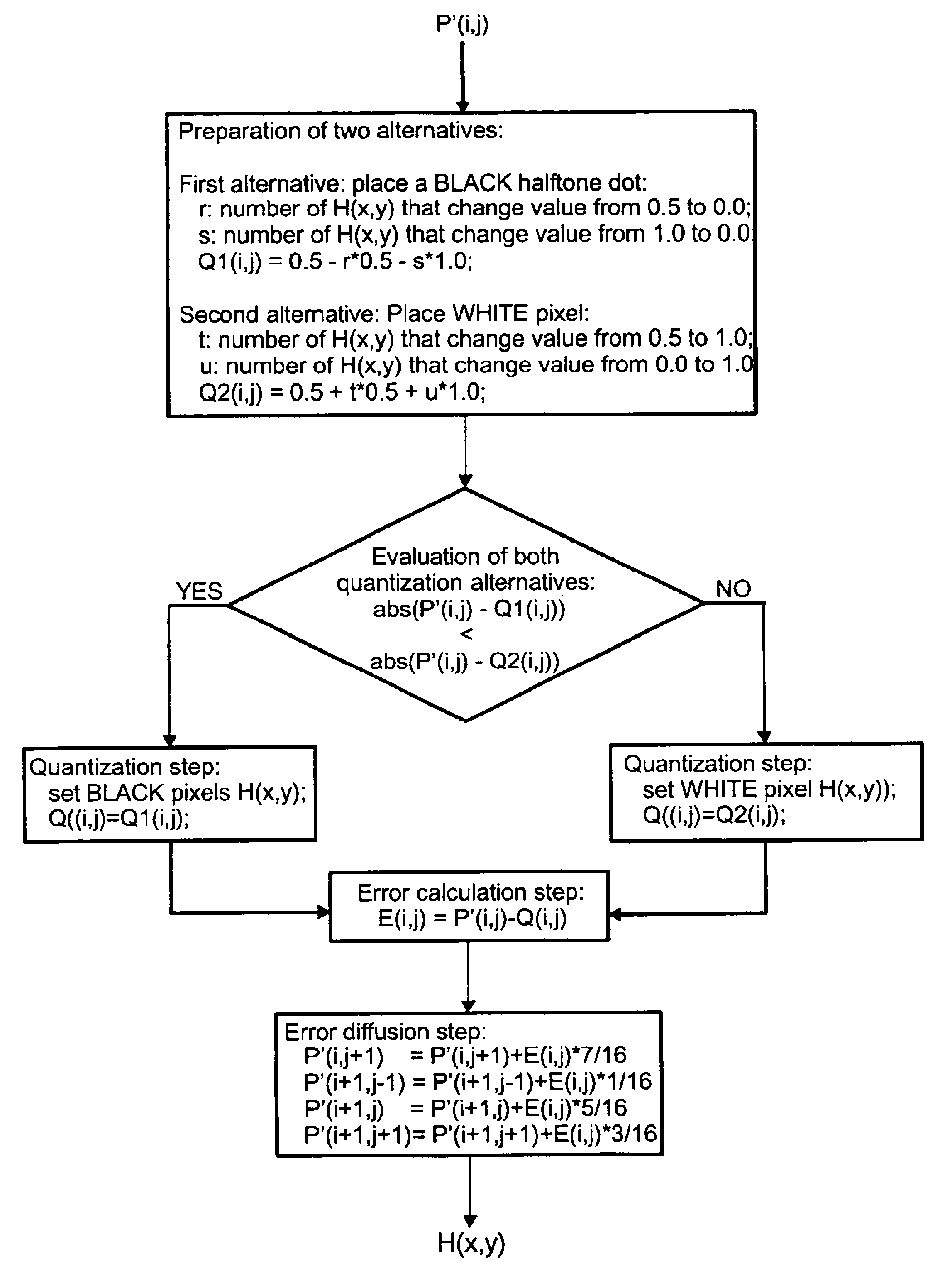Sub-dot phase modulation for computer to plate inkjet system
- Summary
- Abstract
- Description
- Claims
- Application Information
AI Technical Summary
Benefits of technology
Problems solved by technology
Method used
Image
Examples
example
Specific Embodiment: “White”Clusters Having a Size of One Pixel and Black Halftone Inkjet Dots Cover a Cluster of 3×3 Pixels
[0171]In a typical and representative embodiment, the black cluster of pixels is assumed to be a 3×3 cluster defined by the minimum halftone inkjet dot and they can overprint each other or white space, while the white “clusters”consist of only one pixel and can never overprint a black pixel.
[0172]The inkjet printing system transferring the halftoned colour separated images to the printing masters has certain characteristics[0173]The resolution of the grid on which the halftone dots can be placed is 110 pixels / mm (2750 pixels / inch)[0174]the volume of the small droplets deposited on the printing plate precursor are about 4 pl resulting in a dot size of 30 μm diameter.
[0175]As shown in FIG. 13A, this means that when placing the smallest dot on the recording grid, an area of about 9 pixels is covered by the ink. This is the case when placing a dot D1 on position p1...
PUM
 Login to View More
Login to View More Abstract
Description
Claims
Application Information
 Login to View More
Login to View More - R&D
- Intellectual Property
- Life Sciences
- Materials
- Tech Scout
- Unparalleled Data Quality
- Higher Quality Content
- 60% Fewer Hallucinations
Browse by: Latest US Patents, China's latest patents, Technical Efficacy Thesaurus, Application Domain, Technology Topic, Popular Technical Reports.
© 2025 PatSnap. All rights reserved.Legal|Privacy policy|Modern Slavery Act Transparency Statement|Sitemap|About US| Contact US: help@patsnap.com



